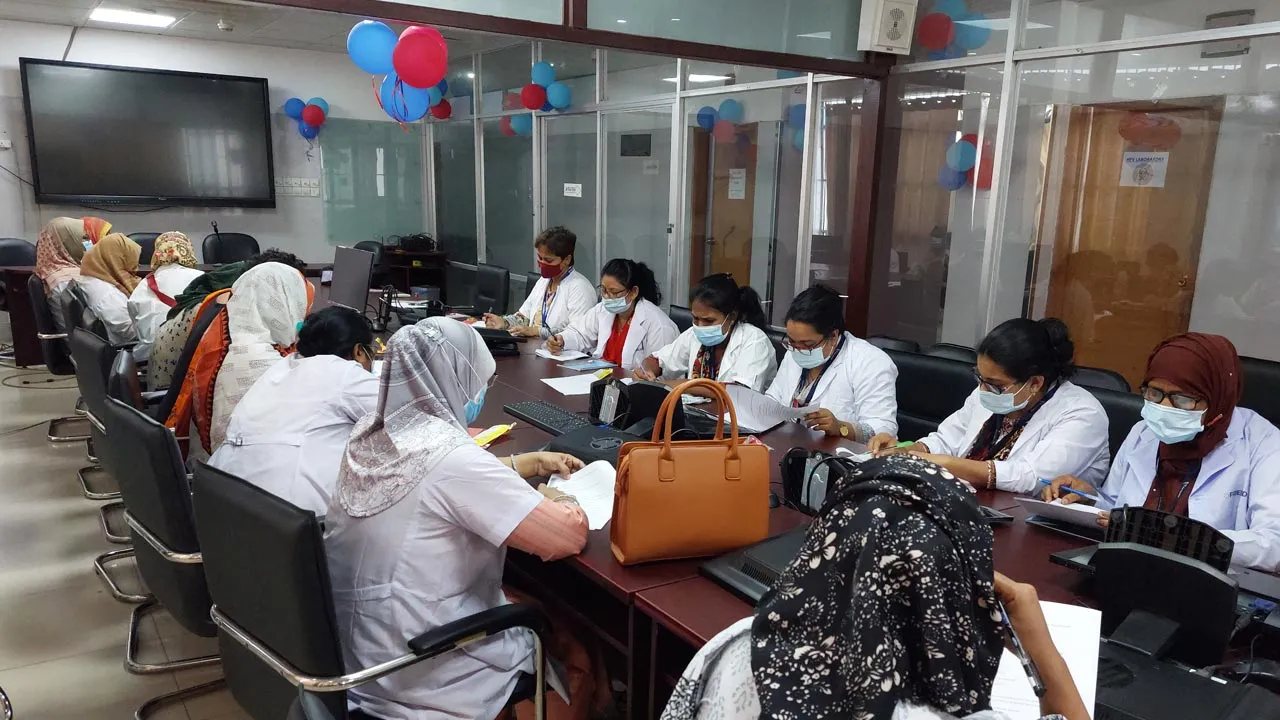
Cervical Cancer Elimination Day of Action: Together we can end cervical cancer
Today, WHO and its Member States withinside the South-East Asia Region and internationally mark the second one Cervical Cancer Elimination Day of Action. Globally, cervical most cancers is the fourth maximum not unusualplace most cancers amongst girls, with an anticipated 604 000 new instances and 342 000 deaths in 2020, of which the Region accounted for 32% and 34%, respectively. Vaccination of women towards human papillomavirus (HPV), screening and remedy of pre-most cancers lesions, and stepped forward get right of entry to to analysis and remedy of invasive cancers are critical, cost-powerful measures that coverage makers need to urgently observe to put off cervical most cancers as a public fitness problem.
Countries of the Region preserve to make constant and sustained development towards cervical most cancers, in step with the Region’s Flagship Priority on stopping and controlling noncommunicable diseases, in addition to the 2021 Regional Implementation Framework on removing cervical most cancers as a public fitness problem. Five Member States – Bhutan, Maldives, Myanmar, Sri Lanka and Thailand – have delivered nation-huge HPV vaccination, which Bangladesh, India and Timor-Leste will quickly additionally introduce. HPV vaccination has been delivered in numerous provinces of Indonesia, defensive tens of tens of thousands and thousands of women.
Almost all international locations of the Region preserve to perform population-primarily based totally cervical most cancers screening, and numerous have additionally blanketed cervical most cancers screening in vital provider or commonplace fitness insurance packages. In 2017, the Region have become the primary WHO place to put up a education package deal for medical experts on cervical most cancers screening and control of cervical pre-cancers. Amid the COVID-19 response, WHO has persisted to perform Regional medical expert trainings in colposcopy and cervical most cancers prevention. Ten of the Region’s eleven Member States offer tertiary care offerings for most cancers analysis and remedy – inclusive of surgical and chemotherapy offerings – and 9 additionally provide radiotherapy offerings.
Gaps and demanding situations although persist, which if unaddressed, will save you the Region from accomplishing the worldwide ninety-70-ninety targets: that is, through 2030, make sure that ninety% of women are completely vaccinated with HPV vaccine; that 70% of girls are screened the use of a high-overall performance take a look at through 35 years of age, and once more through forty five years of age; that ninety% of girls diagnosed with cervical sickness or precancer are treated; and that ninety% of girls with invasive most cancers are successfully managed.
Today, and withinside the months and years ahead, WHO is asking for motion in numerous key regions to obtain the removal goal of 4 or much less instances in keeping with a hundred 000 girls. First, in all international locations of the Region, political dedication need to be strengthened, and efforts to put off the sickness accorded the best precedence at the best levels, mobilizing domestic, worldwide and international financing. Second, in international locations that already offer ordinary HPV vaccination, insurance need to preserve to expand, even above the ninety% goal. Countries which might be but to offer ordinary HPV vaccination need to achieve this with out delay. All international locations need to shift to HPV DNA testing, fortify well timed control of pre-most cancers lesions, and make sure get right of entry to for all to quality, suitable and well timed analysis and take care of invasive and superior cancers, inclusive of palliative care.
Third, efforts to put off cervical most cancers need to be higher included with different key fitness offerings and programmes, including for HIV/AIDS, sexual and reproductive fitness, own circle of relatives making plans and most cancers control. Women residing with HIV are six instances much more likely to broaden cervical most cancers in comparison to girls with out HIV, and an anticipated 5% of all cervical most cancers instances are as a result of HIV. Fourth, country wide, worldwide and international companions need to preserve to assist country wide priorities and plans, save you duplication and fragmentation, and offer adequate, predictable and sustained technical, operational and monetary resources.
Delayed and/or insufficient motion will reason extra morbidity and mortality. Globally, nearly ninety% of all cervical most cancers deaths arise in low- and middle-earnings international locations – a tragedy for maximum of the world’s girls and women, and but every other reminder of ways international inequities adversely effect fitness and well-being, and sustainable social and monetary development. On this Day of Action, WHO reaffirms its dedication to assist all international locations of the Region to put off cervical most cancers as a public fitness problem, making it a sickness of the past, consigned to history.

